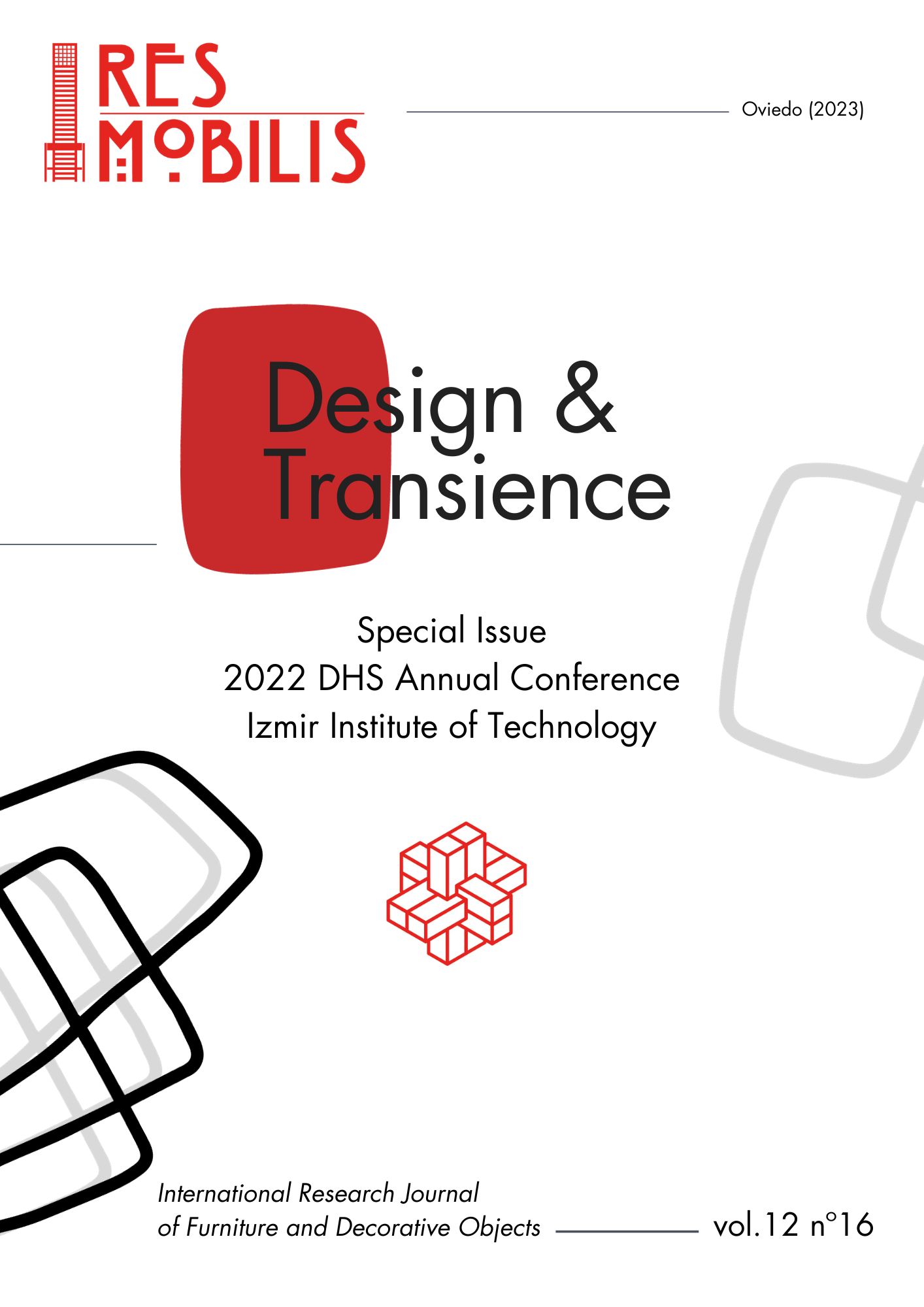Resumen
Sanatoria designed for tuberculosis treatment aimed to allow patients to convalesce by two main approaches: by encouraging patients to become part of social/public life while learning to live with TB, and by softening the ‘hospital’ feeling by providing individualised rooms as spaces of convalescence. Despite their sterile appearances and clinical atmospheres, sanatoria were also emotionally charged spaces that aimed to convey a sense of belonging for the patients. For this reason, the patients were encouraged to personalise their main living environment, i.e., their rooms, which became their temporary homes, and a permanent sense of belonging was thus created in spaces of transience. However, this belonging was only temporary, and later the rooms were cleaned to spotless perfection: as soon as the patients checked out, their rooms were instantly and deeply sanitised, and any traces of the patients were erased. The aim is to discuss the role of design in this contrast between the physical transience of the medical body and the spiritual longevity of the homelike space in a medical environment: Turkish sanatoria in providing convalescence to TB patients offered the feeling of ‘home’ in their spaces of transience.
Citas
Abacı, Duran. Sanatoryumdan. Ajans - Türk Matbaası, 1965.
https://doi.org/10.3138/cbmh.23.2.429. Adams, Annmarie, and Stacie Burke. ‘“Not a Shack in the Woods”: Architecture for Tuberculosis in Muskoka and Toronto.’ Bulletin Canadien d’histoire de La Médecine = Canadian Bulletin of Medical History 23, no. 2 (2006): 429–55.
https://doi.org/10.1177/1206331217750828. Annemans, Margo, Chantal Van Audenhove, Hilde Vermolen, and Ann Heylighen. ‘Inpatients’ Spatial Experience: Interactions Between Material, Social, and Time-Related Aspects.’ Space and Culture 21, no. 4 (November 2018): 495–511.
Bates, Barbara. Bargaining for Life: A Social History of Tuberculosis, 1876-1938. Philadelphia: University of Pennsylvania Press, 1992.
https://doi.org/10.1080/24735132.2018.1436304. Bates, Victoria. ‘“Humanizing” Healthcare Environments: Architecture, Art and Design in Modern Hospitals.’ Design for Health 2, no. 1 (2018): 5–19.
Bryder, Linda. Below the Magic Mountain: A Social History of Tuberculosis in Twentieth-Century Britain. Oxford: Clarendon Press, 1988.
Bynum, Helen. Spitting Blood: The History of Tuberculosis. Oxford: Oxford University Press, 2012.
Campbell, Margaret. ‘Strange Bedfellows: Modernism and Tuberculosis.’ In Imperfect Health: The Medicalization of Architecture, edited by Giovanna Borasi and Mirko Zardini. Zurich: Lars Müller Publishers, 2012.
https://doi.org/10.1017/S0025727300009169. Campbell, Margaret. ‘What Tuberculosis Did for Modernism: The Influence of a Curative Environment on Modernist Design and Architecture.’ Medical History 49, no. 4 (October 2005): 463–88.
Charon, Rita. Narrative Medicine: Honoring the Stories of Illness. New York: Oxford University Press, 2006.
Colomina, Beatriz. X-Ray Architecture. Zurich: Lars Müller Publishers, 2019.
Colomina, Beatriz, and Mark Wigley. ‘The Bacterial Clients of Modern Architecture.’ Docomomo Journal 1, no. 62 (2020): 7–17.
Coltart, Margaret, Helen Raine, and Elizabeth Harrison. Social Work in Tuberculosis. London: Chest and Heart Association, 1959.
Condrau, Flurin. ‘Beyond the Total Institution: Towards a Reinterpretation of the Tuberculosis Sanatorium.’ In Tuberculosis Then and Now: Perspectives on the History of an Infectious Disease. Montreal: McGill-Queen’s University Press, 2010.
Fontana-Giusti, Gordana. Foucault for Architects. Thinkers for Architects 9. London & New York: Routledge, 2013.
Foucault, Michel. Discipline and Punish: The Birth of the Prison. Translated by Alan Sheridan. New York: Vintage Books, 1995.
Foucault, Michel. The Birth of the Clinic: An Archaeology of Medical Perception. Translated by Alan M. Sheridan. Taylor & Francis e-Library, 2003.
Gökçe, Tevfik İsmail. Heybeliada Sanatoryumu Kuruluş ve Gelişimi (1924-1955). Edited by Fatih Artvinli, Cem Hakan Başaran, and Tuna Pektaş. First edition 1957. İstanbul: İstanbul Tüberkuloz Vakfı, 2021.
Imrie, Nicola J. ‘The Architecture and Culture of Sanatoria for Nervous Ailments in the Austro-Hungarian Empire 1890–1914.’ PhD Dissertation, Birkbeck College; University of London, 2008.
Kessel, Joseph. Les Captifs. Gallimard (electronic version), 2015.
Kobra, Melek. Hatıratım. Edited by Gökhan Akçura. İstanbul: Everest, 2006.
Kuban, Doğan. The Turkish Hayat House. İstanbul: T.C. Ziraat Bankası Yayınları, 1995.
Mann, Thomas. The Magic Mountain (Der Zauberberg). Translated by H.T. Lowe-Porter. London: Secker & Warburg, 1971.
Overy, Paul. Light, Air and Openness: Modern Architecture Between the Wars. London: Thames and Hudson, 2007.
Pallasmaa, Juhani. ‘Empathic and Embodied Imagination: Intuiting Experience and Life in Architecture.’ In Architecture and Empathy, edited by Philip Tidwell. Espoo: Tapio Wirkkala – Rut Bryk Foundation, 2015.
Pallasmaa, Juhani. The Eyes of the Skin: Architecture and the Senses. Chichester: John Wiley & Sons Ltd, 2012.
Schildt, Göran, ed. Alvar Aalto in His Own Words. New York: Rizzoli, 1998.
Schulz, Bruno. Sanatorium under the Sign of the Hourglass. Translated by Celina Wieniewska. New York: Penguin, 1979.
Sevüktekin, Hayrettin. Sanatoryum Anılarım. İstanbul: Sıralar Matbaası, 1963.
Sontag, Susan. Illness as Metaphor. New York: Farrar, Straus and Giroux, 1978.
Sontag, Susan. Ilness as Metaphor. New York: Farrar, Straus and Giroux, 1978.
Tomes, Nancy. The Gospel of Germs: Men, Women, and the Microbe in American Life. Cambridge, London: Harvard University Press, 1998.
Topp, Leslie. ‘Isolation, Privacy, Control and Privilege: Psychiatric Architecture and the Single Room.’ In Healing Spaces, Modern Architecture, and the Body, edited by Sarah Schrank and Didem Ekici, 85–102. London and New York: Routledge, 2017.
Veder, Robin. ‘Garden Walks: Physical Mobility and Social Identity at Dumbarton Oaks.’ In Healing Spaces, Modern Architecture, and the Body, edited by Sarah Schrank and Didem Ekici, 122–38. London and New York: Routledge, 2017.
Wallenstein, Sven-Olov. Biopolitics and the Emergence of Modern Architecture. New York: Princeton Architectural Press, 2008.
Willis, Julie, Philip Goad, and Cameron Logan. Architecture and the Modern Hospital: Nosokomeion to Hygeia. London; New York: Routledge, 2019.
Yesari, Mahmut. Yakacık Mektupları. İstanbul: Yeni Matbaa, 1961.
Yıldırım, Nuran, and Mahmut Gürgan. Türk Göğüs Hastalıkları Tarihi. Edited by Muzaffer Metintaş. İstanbul: Türk Toraks Derneği, Aves Yayıncılık, 2012.


